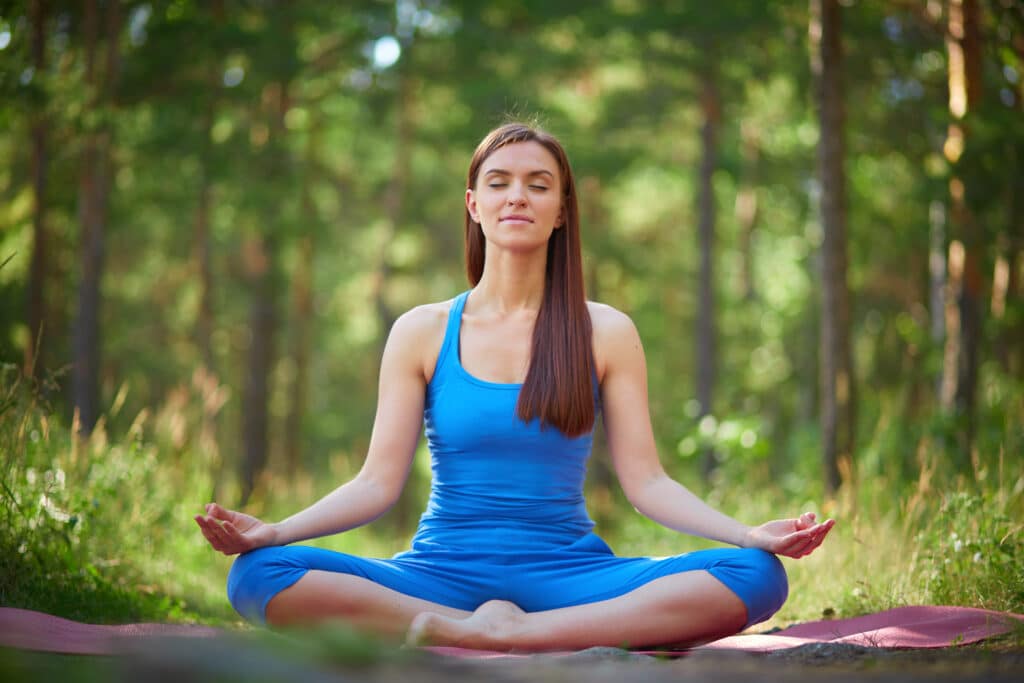Yoga & Wellness
In today’s world of constant noise, fast-paced routines, and digital overload, wellness has become a necessity rather than a luxury. Stress, anxiety, chronic fatigue, and lifestyle-related illnesses are on the rise, pushing many people to seek natural, sustainable solutions. Among all wellness approaches, yoga and wellness stand out as one of the most effective and time-tested paths to achieving complete mind-body harmony.
But yoga is far more than a series of physical postures, and wellness is not just about eating clean. Together, they represent an integrative system for optimal health—one that blends ancient wisdom with modern science.
In this advanced guide, we’ll explore yoga and wellness on a deeper level, looking at their origins, scientific benefits, advanced techniques, and actionable steps to truly transform your life.
The Philosophy Behind Yoga & Wellness
The word “Yoga” comes from the Sanskrit root yuj, meaning “to unite” or “to join.” At its core, yoga is a philosophy of self-realization, integrating body, mind, and soul. It’s not merely exercise; it’s a spiritual science designed to:
- Balance physical health
- Enhance mental clarity
- Cultivate emotional resilience
- Foster a deep sense of connection to self and nature
Wellness, as defined by the World Health Organization, is a “state of complete physical, mental, and social well-being.” Unlike traditional healthcare, which often focuses on treating disease, wellness emphasizes prevention, vitality, and balance.
By combining yoga with wellness principles, you create a lifestyle that nurtures every aspect of your being—not just physical fitness but also mental strength, emotional stability, and spiritual growth.

The Science of Yoga & Wellness
Modern research is increasingly validating what ancient yogis knew thousands of years ago: yoga is a powerful therapeutic practice that can positively influence every system of the body.
How Yoga Impacts the Body and Mind:
- Nervous System Regulation: Yoga activates the parasympathetic nervous system, reducing cortisol levels and promoting relaxation.
- Hormonal Balance: Regular practice helps regulate hormones, improving sleep, digestion, and mood stability.
- Brain Function: Meditation and breathwork increase gray matter density, enhancing focus, memory, and emotional regulation.
- Cellular Health: Studies show yoga reduces oxidative stress, slowing cellular aging.
- Pain Management: Gentle stretching and mindful movement reduce chronic pain conditions like arthritis and lower back pain.
Beyond the Basics: Advanced Yoga Practices for Wellness
If you already know basic yoga poses, it’s time to take your practice deeper. Advanced yoga and wellness routines focus on internal transformation, not just physical flexibility.
1. Pranayama (Advanced Breathwork)
Breath is life, and in yoga, pranayama is considered the bridge between body and mind. Advanced breathwork techniques like Nadi Shodhana (Alternate Nostril Breathing), Kapalabhati (Skull-Shining Breath), and Bhastrika (Bellows Breath) detoxify the body, sharpen focus, and energize your mind.
2. Meditation for Mental Clarity
Advanced meditation practices such as Yoga Nidra, Vipassana, and Transcendental Meditation help access deep states of consciousness, reduce mental chatter, and unlock creativity.
3. Bandhas & Mudras (Energy Locks & Seals)
Practices like Mula Bandha (Root Lock) and Jnana Mudra (Gesture of Knowledge) direct prana (life energy) within the body, improving energy flow and spiritual awareness.
4. Ayurveda and Yoga Synergy
Pairing yoga with Ayurveda, India’s ancient healing system, personalizes your wellness journey. Ayurveda identifies your body type (dosha) and suggests tailored diets, yoga postures, and lifestyle practices for balance.
The Role of Mindfulness in Yoga & Wellness
Mindfulness is the foundation of true wellness. In yoga, every posture, breath, and movement is an opportunity to be fully present. Studies show that mindful practices reduce anxiety, improve emotional regulation, and increase overall life satisfaction.
To deepen mindfulness:
- Start each yoga session with intentional breathing.
- Practice body scans during meditation.
- Incorporate mindful eating, savoring every bite.
- Pause throughout your day for short breathing breaks to re-center.
A Holistic Wellness Lifestyle: More Than Just Yoga
True wellness extends beyond the yoga mat. Here’s how to build a complete Yoga & Wellness lifestyle:
1. Nutrition as Medicine
Adopt a diet rich in whole foods, seasonal produce, and plant-based meals. Ayurveda recommends eating according to your dosha (Vata, Pitta, Kapha) for optimal digestion and energy.
2. Functional Fitness
Complement yoga with strength training, Pilates, or walking to build bone density and cardiovascular health.
3. Stress Management Techniques
Incorporate daily breathing exercises, journaling, gratitude practices, and digital detoxes.
4. Restorative Wellness Rituals
Schedule regular massages, aromatherapy sessions, or float therapy to promote deep relaxation.
5. Community and Connection
Join yoga communities, attend retreats, or connect with like-minded people for motivation and support.
Yoga & Wellness for Modern Challenges
Yoga’s ancient wisdom offers solutions to today’s lifestyle challenges:
| Modern Challenge | Yoga & Wellness Solution |
| Sedentary work life | Chair yoga, spinal stretches, mobility sequences |
| High-stress careers | Meditation, pranayama, restorative yoga |
| Tech fatigue | Digital detoxes, outdoor yoga, nature walks |
| Poor sleep patterns | Evening yin yoga, Yoga Nidra, calming breathwork |
| Chronic pain | Therapeutic yoga, mindfulness-based stress reduction (MBSR) |
Taking Your Yoga & Wellness Journey Further
To truly benefit from yoga and wellness, consistency is key. Here are some advanced tips:
- Set Seasonal Goals: Adjust your yoga practice and diet to match seasonal changes.
- Track Your Progress: Use a journal to monitor flexibility, energy levels, and mental clarity.
- Invest in Education: Consider teacher training, workshops, or retreats for deeper learning.
- Work with Experts: A yoga therapist or wellness coach can personalize your journey.
- Embrace Patience: Yoga is a lifelong practice—progress is gradual but deeply rewarding.
Why a Yoga & Wellness Blog Matters
A Yoga & Wellness blog isn’t just about sharing tips—it’s a platform to inspire transformation. Readers can explore:
- Evidence-based wellness research
- Practical yoga sequences
- Mindset and mindfulness tools
- Holistic living insights
- Stories of personal growth through yoga
By curating high-quality, advanced content, you create a resource hub for those seeking meaningful lifestyle change.







